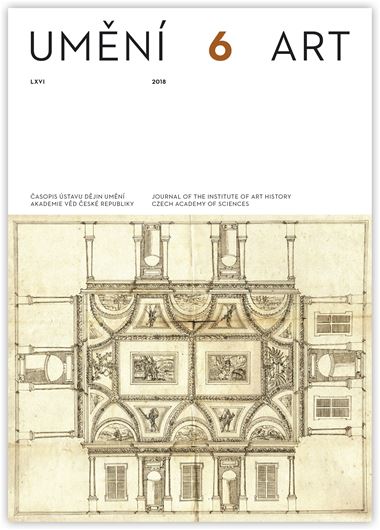Veronika Rollová
„Nemůžeme tam dát nějakého kopáče!“ Program výzdoby pražského metra v sedmdesátých letech 20. století
This study focuses on the programme of artistic decoration of the first stages of Lines A and C of the Prague Metro, built in the course of the seventies of the 20th century. It deals with the status of the Metro in the symbolical framework of the city and the ways in which the transition from the relaxed sixties to the period of normalisation was reflected in its decor. Continuity was preserved in the orientation towards the building of the environment as the socialist response to the anonymity of the public spaces of the cities of the West, but together with the weakening of the utopian dimension of socialism art no longer had the task of sharing in the education of New Man, who was meant in particular to work hard and to fight for socialism. The normalisation ideals had arrived of calm cooperation, leisure time and family life. At the same time, even in the socialist context, the consumer lifestyle was gaining strength, implemented in the Metro in the shape of a number of shops and advertising panels. The conservative commission responsible for the decoration of the Metro as a construction of Czechoslovak-Soviet cooperation had difficulty finding a way for works of art to present this theme convincingly, and in the end it was suppressed in the decoration. The text follows the decision-making processes of the members of the Art Council of the National Committee of Prague, responsible for the ideological concepts and approval of the realisations for the Metro. The study of the records of their meetings was complicated by the entrenched requirement that commissions for public spaces were acquired in the normalisation period exclusively by politically loyal artists creating monumental figural works, or else that the central motivation of the members of such commissions was personal profit. The members of the council were certified conservative figures, active in leading cultural institutions, but nevertheless progressive artists were also given space in the contests. Although the focal point of the decoration was works expressing concrete socialist ideas and reacting to the names of the stations, space was also reserved for abstract works, defined here as “applied art”. The members of the Art Council gradually developed a strategy through which they were able to restrict the realisation of concrete works for the Metro. They did not implement this with regard to works that were insufficiently realistic, idealised or monumental, but on the contrary often for works that were ideologically direct or simply unsuitably located in a concrete space.
Full-text in the Digital Library of the Czech Academy of Sciences:
https://kramerius.lib.cas.cz/uuid/uuid:3f2ae2a1-4120-4d6b-9374-e8c665af609f
< back

